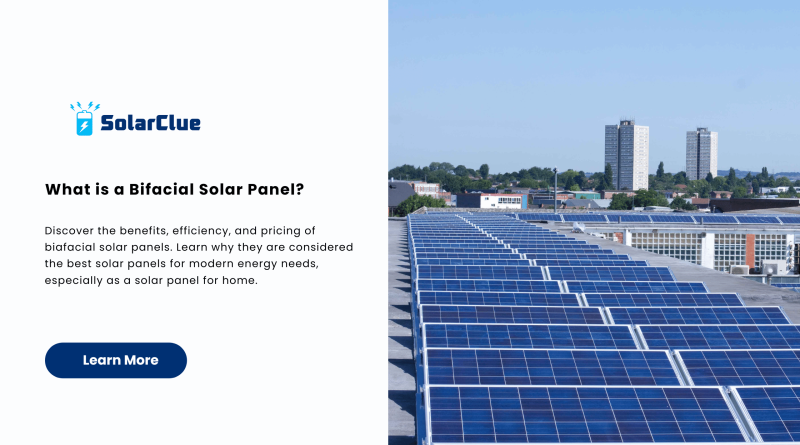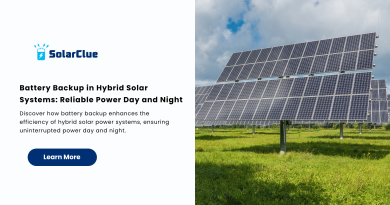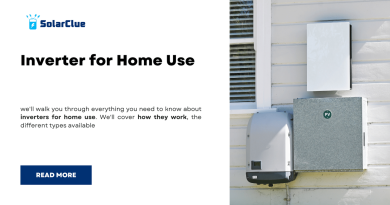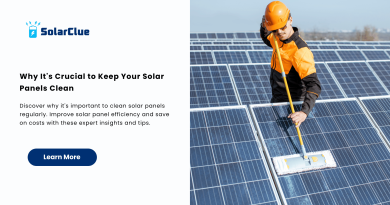What is a Bifacial Solar Panel?
A bifacial solar panel is an advanced type of solar panel that captures sunlight from both its front and rear surfaces. This dual-sided capability allows it to harness more energy by using both direct and reflected sunlight, leading to greater energy output than traditional panels.
Table of Contents
- 1 How Do Bifacial Solar Panels Work?
- 2 Key Benefits of Bifacial Solar Panels
- 3 3. Modern Aesthetics
- 4 4. Improved Return on Investment
- 5 Ideal Applications for Bifacial Panels
- 6 Why Choose Bifacial Over Traditional Panels?
- 7 Understanding Bifacial Solar Panel Price
- 8 Bifacial vs Monofacial: A Quick Comparison
- 9 Is a Bifacial Solar Panel Right for You?
- 10 Best Practices for Installation
- 11 Homeowners’ Favorite: Bifacial Solar Panel for Home
- 12 What Influences Biafacial Solar Panel Price?
- 13 Government Incentives
- 14 Long-Term Value and Savings
- 15 Eco-Friendly Impact
- 16 Future of Solar Technology
- 17 Where to Buy Biafacial Solar Panels
- 18 Conclusion
- 19 FAQs
How Do Bifacial Solar Panels Work?
These panels are constructed with a transparent backsheet or dual glass layers, enabling light to pass through and reflect off surrounding surfaces like the ground or rooftops. The rear side of the bifacial solar panel absorbs this reflected light, enhancing total energy generation.
Key Benefits of Bifacial Solar Panels
1. Superior Energy Output
Bifacial solar panels can produce up to 30% more electricity compared to standard panels, making them highly efficient in various environments.
2. Enhanced Durability
With glass protection on both sides, they are more resistant to environmental damage and wear, increasing their operational lifespan.
3. Modern Aesthetics
Their clean, frameless design adds a sleek and modern touch to any property.
4. Improved Return on Investment
The increased efficiency leads to quicker ROI, especially when installed in reflective or high-sunlight areas.
Ideal Applications for Bifacial Panels
1. Residential Installations
Perfect for homeowners seeking efficient and aesthetically pleasing solar panel for home options.
2. Commercial & Industrial Usage
Ideal for businesses aiming to reduce energy costs with long-term sustainable solutions.
3. Remote & Off-Grid Setups
High efficiency makes them suitable for areas where maximizing solar generation is crucial.
Why Choose Bifacial Over Traditional Panels?
Compared to monofacial panels, bifacial solar panels are the best solar panels for energy output, longevity, and visual appeal. Their advanced technology offers more value in the long run.
Understanding Bifacial Solar Panel Price
The bifacial solar panel price typically ranges from $250 to $400 per panel. While they may have a slightly higher upfront cost than standard panels, their energy efficiency and long-term savings make them more economical overall.
Bifacial vs Monofacial: A Quick Comparison
| Feature | Bifacial Solar Panel | Monofacial Solar Panel |
| Energy Efficiency | Higher (Dual-sided) | Standard (Single-sided) |
| Durability | Superior (Double glass) | Average |
| Price | Slightly Higher | Lower |
| ROI | Faster | Slower |
Is a Bifacial Solar Panel Right for You?
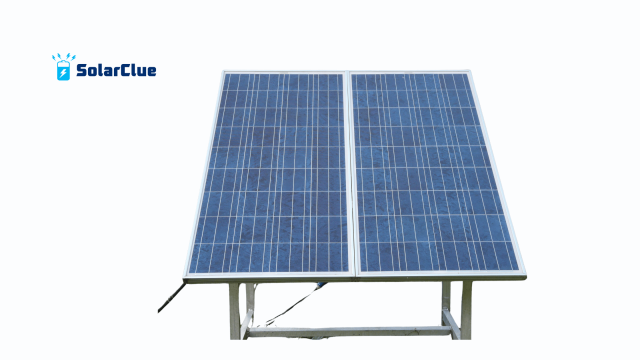
If your space receives ample sunlight and has light-colored or reflective surfaces nearby, a bifacial solar panel setup could be ideal. It’s an excellent choice for those seeking the best solar panels for efficiency and value.
Best Practices for Installation
To maximize output:
- Install over reflective surfaces like white roofs or concrete
- Use tilt-adjustable mounting systems
- Avoid shaded areas
- Maintain cleanliness to ensure maximum light absorption
Homeowners’ Favorite: Bifacial Solar Panel for Home
When choosing a solar panel for home, consider reliability, efficiency, and aesthetics. Bifacial solar panels meet all these needs while significantly reducing electricity bills and increasing home value.
What Influences Biafacial Solar Panel Price?
Key factors include:
- Panel brand and technology
- Wattage capacity
- Installation complexity
- Local labor rates
- Government incentives or rebates
Government Incentives
Many regions offer subsidies for solar installations. These can greatly lower the effective bifacial solar panel price, making them more affordable than they appear at first glance.
Long-Term Value and Savings
Though initial costs may be higher, the extra energy output of bifacial solar panels often leads to lower utility bills and a shorter payback period. Over time, the investment proves significantly beneficial.
Eco-Friendly Impact
Switching to solar using bifacial solar panels reduces carbon emissions and reliance on fossil fuels—key steps toward a more sustainable planet.
Future of Solar Technology
The solar industry is rapidly evolving, with bifacial solar panels leading innovation. As production scales and prices drop, expect to see wider adoption globally.
Where to Buy Biafacial Solar Panels
Explore a range of premium bifacial solar panels at SolarClue. For detailed guides, insights, and updates, check out blog.solarclue.com.
Conclusion
From cutting-edge performance to long-term savings, bifacial solar panels are setting new benchmarks in solar technology. Whether you’re installing a solar panel for home or a large-scale project, these panels offer top-tier efficiency and a smarter path to clean energy. Embrace the power of solar with confidence.
Ready to make the switch? Discover the possibilities at solarclue.com and let your journey to energy independence begin today!
FAQs
1. Are bifacial solar panels worth the investment?
Yes, they offer higher efficiency and quicker ROI, making them a smart long-term choice.
2. Can I install them on my rooftop?
Yes, bifacial solar panels are great for both residential and commercial rooftops.
3. What’s the lifespan of these panels?
Typically 25-30 years with minimal maintenance.
4. Do they need special mounts?
Not necessarily, but using elevated mounts with reflective surfaces improves efficiency.

